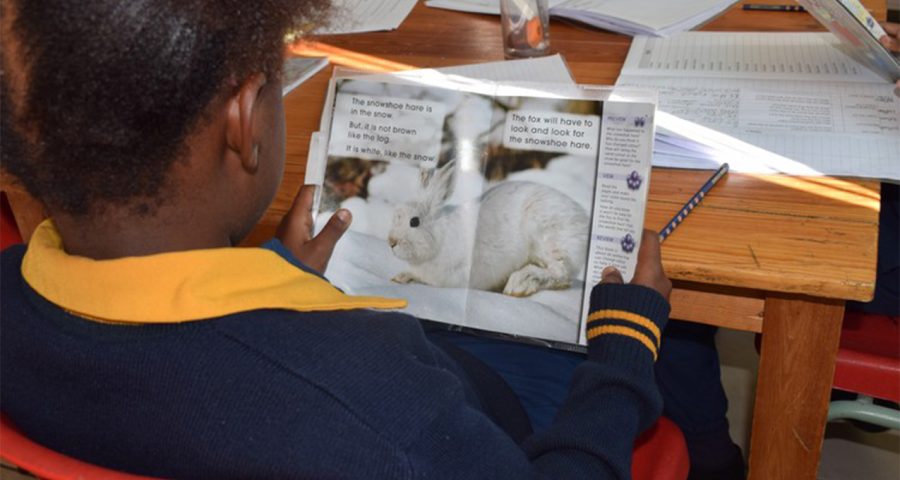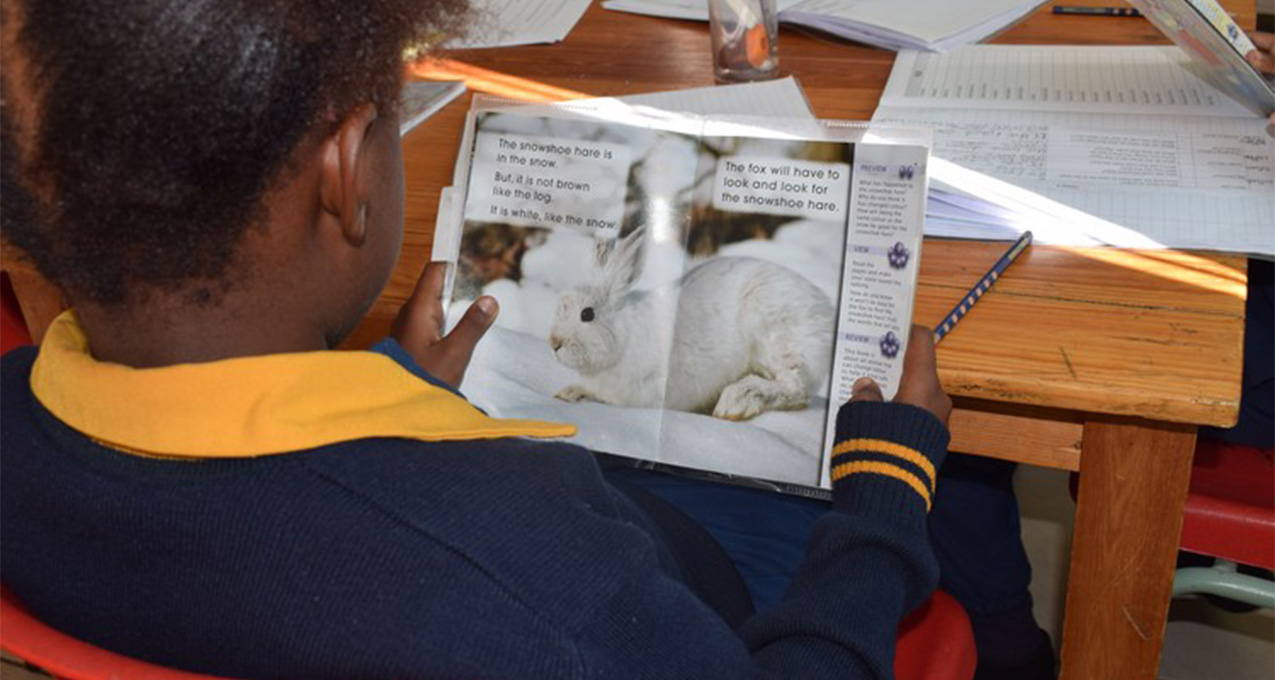
Reading literacy: steps to address literacy crisis in South Africa
Reading literacy has raised concern among education stakeholders in the country. Kunyashe is a Grade 1 pupil in Cape Town, South Africa. Reading literacy has raised concern among education stakeholders in the country. Kunyashe is a Grade 1 pupil in Cape Town, South Africa. She’s very focused on her schoolwork. She shares a tiny one-roomed […]

Reading literacy has raised concern among education stakeholders in the country. Kunyashe is a Grade 1 pupil in Cape Town, South Africa.
Reading literacy has raised concern among education stakeholders in the country. Kunyashe is a Grade 1 pupil in Cape Town, South Africa. She’s very focused on her schoolwork. She shares a tiny one-roomed shack, hardly bigger than a double bed, with her mother and four siblings.
Kunyas receives a meal at school – her teacher once saw the little girl spooning some of this meal into another container to take home for her baby brother. This is the context in which many South African children learn to read.
ALSO READ: Study: SA’s children have lost a decade of reading progress
But it’s a context that received no mention when the country’s Department of Basic Education, on 16 May 2023, released the alarming preliminary findings of the Progress in Reading Literacy Study (PIRLS 2021).
The international standardised test measures the reading literacy of Grade 4 children (10 years old). It is designed to measure children’s “reading literacy” and to provide a baseline for future studies of trends in achievement. The headline finding was grim: “81% of South African children in Grade 4 cannot read for meaning”.
ALSO READ: Makhanda classrooms are overcrowded despite the failed national reading plan
THERE IS NO DENYING THAT THERE IS A LITERACY CRISIS IN SOUTH AFRICAN SCHOOLS
The problem is that official discourses present it as something that occurs in a social vacuum and can be solved by technicist approaches. It isn’t. The political and economic dimensions of the problem are deeply entangled with the glaring inequalities in South Africa.
We are literacy and language education experts, and members of the bua-lit collective advocating for quality education for children who speak African languages. Based on our research and ongoing work in classrooms across South Africa, we’ve identified five practices we believe will promote “rich literacies”. This approach involves a wider understanding of literacy in which children are engaged with reading and writing texts that come from their worlds and that have meaning for them.
ALSO READ: How Angie Motshekga’s reading plan failed SA’s children
POVERTY OF READING LITERACY
The daily lives of most children in South Africa are fraught with poverty, hunger and uncertainty. Two-thirds of these children from poorer backgrounds attend no-fee schools. Sadly, they also receive poverty of literacy teaching and materials. The current dominant process is based on the contested “Science of Reading” method.
In this approach, children are largely given access to basic atomised skills: sounding out letters (phonics), followed by lockstep reading of words with an emphasis on fluency, accuracy and speed. Reading authentic books with plots and illustrations is seen as harmful or needs to be delayed until children can efficiently decode words.
Teachers are trained to teach using “graded readers” – simplified texts repeating the same vocabulary – together with alphabet charts, friezes and flashcards and are discouraged from telling stories, using real books to read for enjoyment or writing with children.
ALSO READ: Makhanda literacy project shows dramatic results
This approach lends itself well to highly technicist interventions that are easy to implement. But it misses the crucial point that children need to be highly motivated to learn to read and write. To read for meaning they must be motivated to make meaning. It also misses the point that reading literacy and writing are not just cognitive skills – they are socially shared and shaped practices.
In contrast to the poverty of literacy imposed on poor children, middle-class children in well and over-resourced schools are given plenty of opportunities at school and home to engage in pleasurable, motivating and meaningful ways with high-quality books as well as to express themselves through writing. This is in addition to school-based phonics programmes and graded readers.
ALSO READ: Inspiring a culture of reading in primary schools
A further problem in enabling children to become successful readers and writers lie in South Africa’s language in education policies and the way they have been implemented in schools.
The majority of African language-speaking children in South Africa learn in their home language for the first three years and then switch to learning in English in Grade 4. Children have hardly had the opportunity to establish literacy skills in their home language when they are forced to learn in and through English.
ALSO READ: New report: Literacy crisis deepening in South Africa
FIVE PRACTICES ON READING
We believe that there are no quick fixes to the impoverishment of literacy learning for poor children in South Africa resulting from the legacies of colonialism and apartheid and now compounded by beliefs in technicist solutions. Rather we outline five practices that could make an immediate start in providing literacy teaching that enriches children’s literacy lives.
- Every foundation phase classroom should have living libraries that include enjoyable, quality, illustrated published stories and non-fiction books in children’s most familiar languages as well as English; and that include books made by children with each other and the teacher in the classroom. Children must take at least one book home every day.
- There should be dedicated time every day for teachers to read aloud and talk to pupils about interesting fiction and non-fiction books.
- Teachers should dedicate time each day to engage in shared writing with children of texts about topics that they are interested in that draw on wide background knowledge and that have a purpose.
- In addition to the dedicated time every day to teach explicit literacy skills and knowledge like phonics (letter sound-relationships) the basic skills also need to develop an understanding of text structure/genre for different kinds of text: how stories start; develop and end; the parts of a recipe: ingredients and methods; and the mechanics of writing (use of punctuation, spelling, handwriting).
These four activities need to be supported by both pre-service and ongoing teacher training. Literacy coaches can also become a resource to support teachers.
- The wider community has a role to play, too. This could be in the form of after-school and/or holiday literacy clubs. Here children engage with rich literacies in a range of fun activities such as sharing stories through oral storytelling and story-reading; hearing from published authors, singing and playing games. In school, retired teachers, grandparents and unemployed parents and youth, after some training, can assist teachers in classrooms and work in small groups with children.
Rich literacies require a multi-pronged approach which views literacy in its wider context and which engages a diversity of practices, programmes and opportunities.
